Turtles In Sri Lanka Guide: What You Need To Know!
Sri Lanka hosts one of the world’s most significant concentrations of nesting sites for several species of endangered sea turtles making it a hugely popular destination to see them in their natural environment. We saw dozens of turtles in Sri Lanka in March, sometimes within a few meters of the beach while snorkelling and swimming.
Depending on the location and time of year, you can also witness nesting turtles coming onto the beaches to lay their eggs.
Many beaches have protected areas to watch turtle hatchlings make their way to the sea. While we did attend a couple of these releases, we do have some reservations about recommending them. Overall, Sri Lanka’s conservation efforts to protect the turtles appear to be paying off, and we were surprised by the number of wild sea turtles we saw.
Most common turtle species in Sri Lanka: Green & Olive Ridley
Where to see turtles: Swimming in the sea, nesting on a beach & hatcheries
When to see turtles: All year round, November-May is peak season
Turtles In Sri Lanka: Overview
Sri Lanka may be best known for its elephants but it is also home to five of the world’s seven turtle species, with perfect conditions both on the beach and in the ocean.
No matter the time of year, at least one of those species will engage in one of nature’s greatest spectacles; thousands of adult female turtles will return to lay their eggs on the beach where they were born. Between 45 and 75 days later, many thousands more baby turtles hatch to begin their journey, which will, one day, bring some of them back to the very same beach.
Despite the success of Sri Lanka’s conservation programme, with as few as 1 in 1000 hatchlings surviving into adulthood, the global turtle population of sea turtles is decreasing. Cross-country cooperation is needed to ensure the survival of these iconic species before they disappear from our oceans.
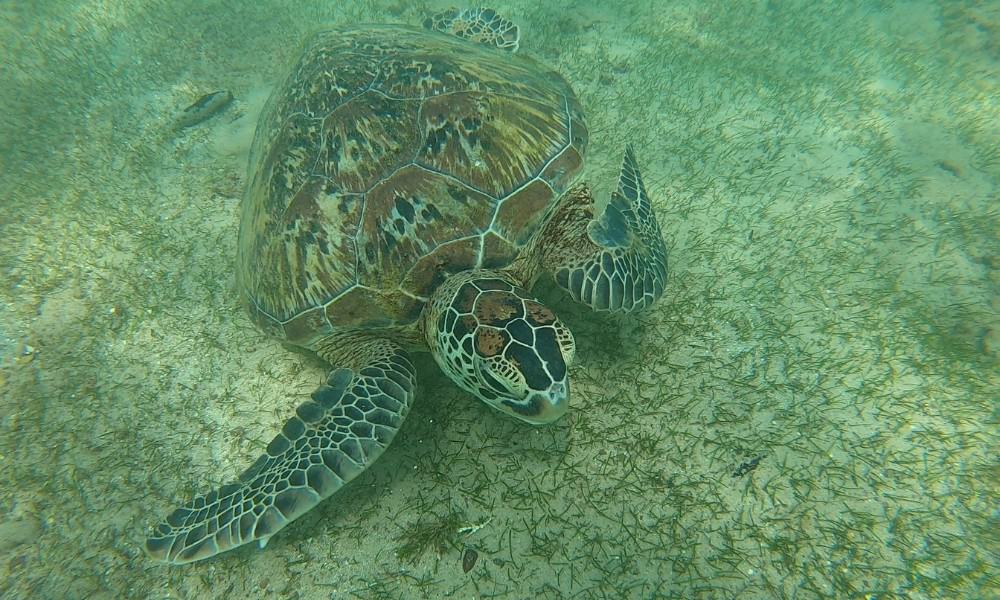
Turtles Species In Sri Lanka
The five species of turtle found in Sri Lanka are the Green, Loggerhead, Hawksbill, Olive Ridley and Leatherback. Each species has its own nesting habits and preferences, but one thing they all have in common is that the adult females return to the same beach each time to nest.
Our Sri Lankan Experience Of Turtles
We witnessed two hatchling releases and saw many Olive Ridley turtles swimming freely in both Hikkaduwa and Mirissa.
The hatchling releases took place around sunset in protected areas where the turtle eggs had been relocated. In each case, the nest was uncovered and the hatchlings checked over before being placed in a large box.
The hatchlings (100+) were then tipped onto the beach to make their way to the ocean, and despite being told the importance of self navigation, several were picked up and handled. Many more were possibly crushed by onlookers standing in the sea, as the waves carried them in and out.
While this was a great thing to see in Sri Lanka, we had mixed feelings about the releases, and whilst it was great to see the baby turtles make it to the sea, too many were handled and hurt in the process.
Whilst we didn’t visit any Turtle Sanctuaries, we did see many turtles swimming in the ocean. Unfortunately, some locals ‘assist’ tourists at Turtle Beach in Hikkaduwa, using seaweed to attract the turtles. This encourages them to get very close to shore and we witnessed one large turtle being repeatedly chased and grabbed in the shallow water.
We had a much more ethical experience in Mirissa, where we saw several turtles while snorkelling. They were largely left alone and were able to behave naturally.
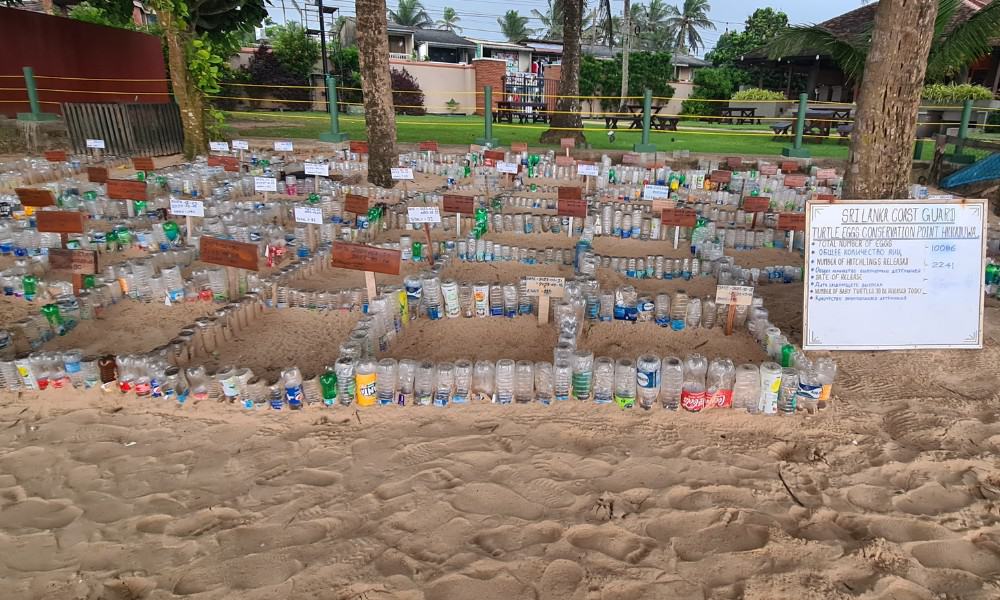
Why are Sea Turtles Important?
There are many reasons sea turtles are important in Sri Lanka and around the world.
Ecological Balance: Sea turtles are an integral part of the ecosystems in which they live. By grazing on seagrass, they help prevent the coral reefs from becoming overgrown, contributing to the survival of the many species that live in these unique habitats.
Beaches: Turtles play an important role in the health of the beaches where they come ashore to nest. Their nests reduce sand compaction and provide nutrients to a huge range of plants and organisms.
Biodiversity: Turtles are important both as predators and as prey in maintaining the balance of biodiversity in the ocean. Their activity, including eating jellyfish, regulates populations of multiple marine species. Their eggs and young turtles are an important food source for predators.
Human Importance: Beyond their importance to ecological balance, turtles attract huge numbers of tourists from around the world, and their economic value is significant. They are an indicator of the wider health of our oceans and more must be done to protect them.
Where To See Turtles In Sri Lanka
You shouldn’t need to try too hard in Sri Lanka to see turtles, as they can be seen around most of the coast.
- On the beach
- In the Ocean
- At Turtle Hatcheries, Sanctuaries or Conservation Projects
The most popular spots are on the south, east and west coasts.
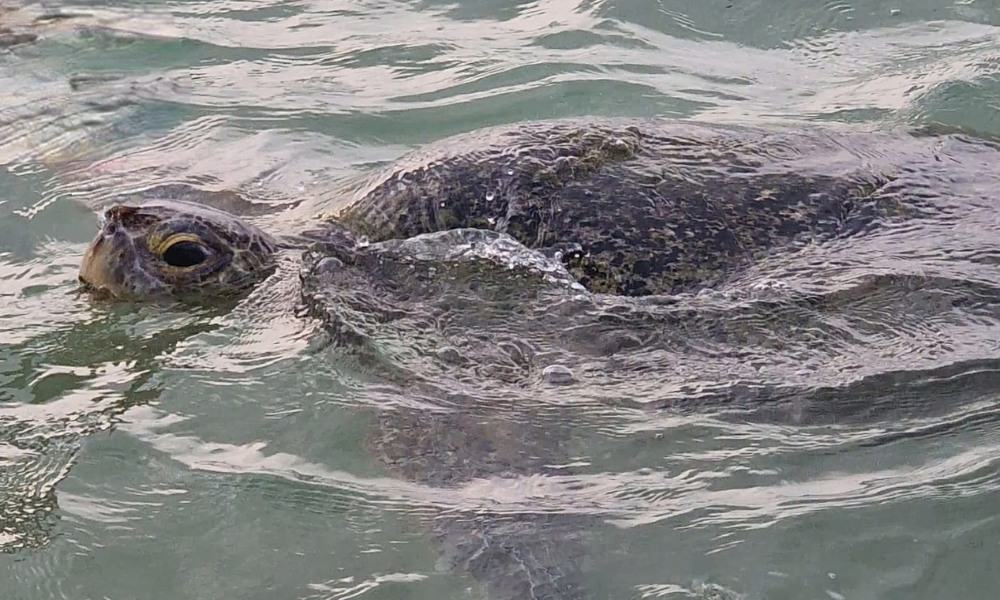
Best Beaches To See Turtles in Sri Lanka
Various beaches around the island serve as important nesting sites for sea turtles.
Rekawa Beach
Rekawa Beach is renowned for its sea turtle nesting sites. While this fishing village is less touristy than other southern beaches, visitors are attracted to view turtles. The beach is closed overnight to allow turtles to nest without distraction but you can take a tour to watch.
These tours allow you to witness turtles laying their eggs and perhaps see hatchlings fledging if you are lucky. Although there is no guarantee, nesting turtles are seen most nights. The Rekawa Turtle Watch is responsible for protecting them.
Turtle Beach
Hikkaduwa is a popular beach destination. Turtle Beach, in particular, has almost guaranteed turtle sightings throughout the day. This is due to huge numbers of visitors feeding them seaweed. You are best to visit early in the day when the sun is shining and avoid crowds later in the day.
When a nest is ready, the hatchlings are released on the beach around sunset.
Mirissa Beach
Mirissa is a popular beach destination with a high chance of spotting turtles in the ocean. We spotted several from the beach, close to shore, and while snorkelling. A turtle even popped his head up while we surfed!
Mirissa was the best place to snorkel with sea turtles for us.
Baby turtles are also regularly released here, as they hatch from the protected area. Information is available from the lifeguard station.
Pigeon Island National Park
Possibly one of the best snorkelling spots in Sri Lanka. Pigeon Island is a National Park like no other on the island. Turtles are regularly encountered in the thriving underwater world. Early morning is the best time to visit to swim with turtles.
Other Places To See Turtles In Sri Lanka
Educational tours are usually provided when visiting hatcheries in Sri Lanka.
Turtle Hatchery
Turtle hatcheries and sanctuaries are found along the coast at popular beach sites such as Kosgoda, Hikkaduwa and Galle.
They will often charge a fee or ask for a donation, to fund the collection and protection of turtle eggs that may otherwise be destroyed by natural predators or stolen by poachers. Depending on how it is conducted, this process can sometimes play an important role in turtle conservation.
Unfortunately, the hatchlings are often not realised immediately. This is often portrayed as an effort to help them ‘gain strength’ but can hinder their natural survival ability.
Turtle Conservation Sites
Turtles face many challenges to their survival. Loss of habitat, pollution, and illegal poaching is leading to a rapidly declining global population.
There are several legitimate turtle conservation projects in Sri Lanka that aim to preserve their nesting sites. These often involve relocating eggs and manually releasing hatchlings to the ocean.
Although many of these efforts do conserve turtles in Sri Lanka, there are also some that operate unethically to make money from tourists. Do your research first to ensure the hatchlings have the best chance of life.
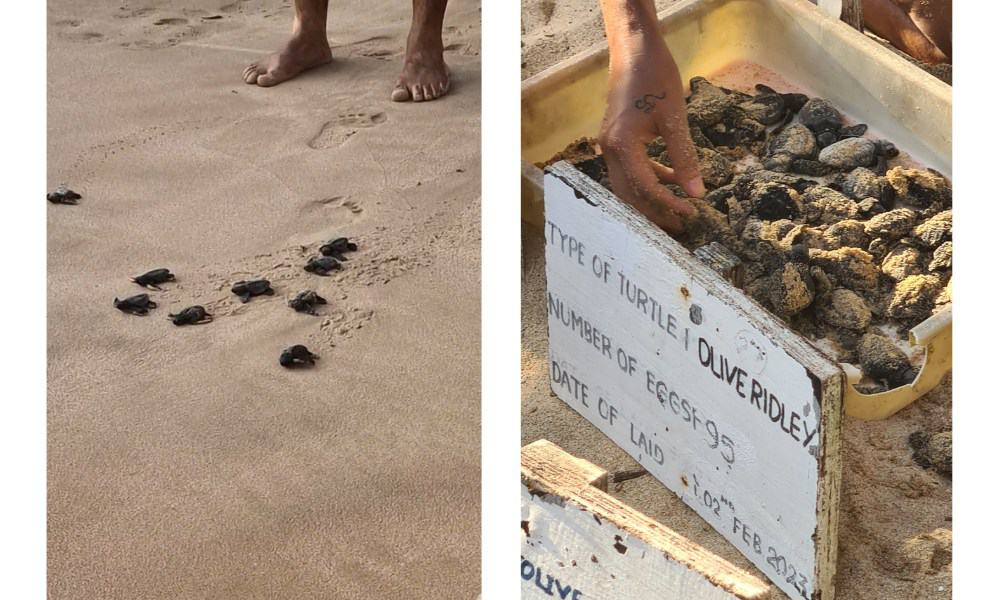
Best Time To See Turtles In Sri Lanka
Despite being able to see turtles year round, knowing when to see them is as important as where to find them. In Sri Lanka, different species of turtles lay their eggs at different times.
The best time to see turtles in Sri Lanka is during their nesting and hatching seasons. Peak nesting season occurs between November and March. Therefore, peak hatching occurs around February to May. While these are peak seasons, nesting and hatching occur year-round across the 5 turtle species.
The best time to see mothers nest on the beach is from dawn till dusk, whereas Hatchlings are guided by moonlight, so they fledge in the evening.
Turtles are reliably seen there throughout the year at Turtle Beach. Unfortunately, this is largely as a result of the unethical feeding.
There are numerous hatcheries around the coast and most of these can be visited anytime.
Tips For Responsible Turtle Watching
Although it goes without saying turtles and their habitats should be respected at all times.
- Don’t drop litter – prevent entangling, poisoning or causing blockages.
- Do pick up litter that has been left on the beach and dispose of it responsibly.
- Don’t disrupt the turtle’s natural behaviours – torches can discourage egg laying.
- Do leave the beach tidy – remove any obstacles eg. chairs, holes & sandcastles.
- Don’t disturb nesting turtles or nests.
- Do report any injured or nesting turtles & poaching behaviour.
- Do keep a distance from turtles on land and in the ocean – give them space!
- Don’t feed or touch turtles
- Do follow instructions from the guides and knowledgeable locals.
If you wish to take a tour or hire a guide, please do some research. Make sure you choose an organisation that keeps to ethical practices and prioritises the well-being of the turtles.
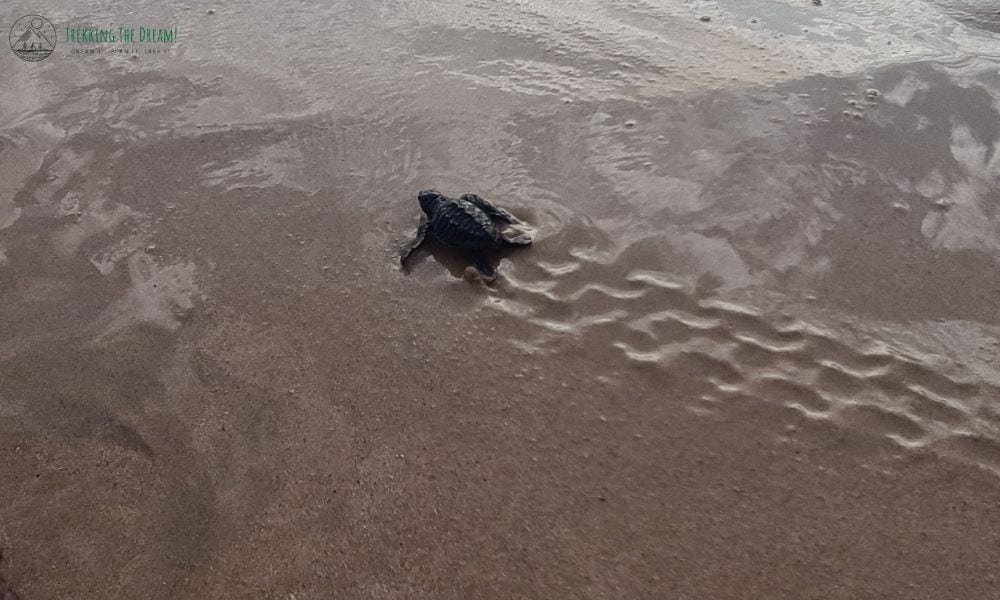
FAQ: Turtles In Sri Lanka
Where Can I Find Turtles In Sri Lanka?
Turtles can be found almost anywhere around the coast of Sri Lanka. Whether you are looking for nesting mothers or hatchlings on the beach, visiting a hatchery or swimming in the Indian Ocean, you have a high chance of seeing turtles.
How Many Turtles Are In Sri Lanka?
Five of the seven sea turtle species regularly visit Sri Lanka. The Green Turtle and Olive Ridley Turtle are the most common.
Are Turtles Protected In Sri Lanka?
Turtles and their eggs are strictly protected by law, with severe punishments for those caught interfering with them. Despite this, many eggs are poached and sold every year. Sri Lanka does have conservation efforts in place and some beaches are protected.
Can You Swim With Turtles In Sri Lanka?
Turtles are always present in the Indian Ocean surrounding Sri Lanka. There is a high chance of swimming with turtles while you are in the sea, but you must keep your distance. Do not approach, follow, touch or feed them or prevent their natural behaviour in any way.
Final Thoughts: Turtles In Sri Lanka
From snorkelling amongst the reefs to visiting night-time nesting sites and watching hatchlings emerging on the beach, Sri Lanka offers visitors an opportunity to connect with and learn about these incredible creatures.
Knowing how, where and when to see turtles in Sri Lanka will help ensure you get the most from your experience.
Above all, please make sure you contribute to Sri Lanka’s conservation effort by treating turtles with respect. You don’t need to pay to get close to a turtle; it does them no good. We gained far more pleasure from chance encounters while swimming and snorkelling.
